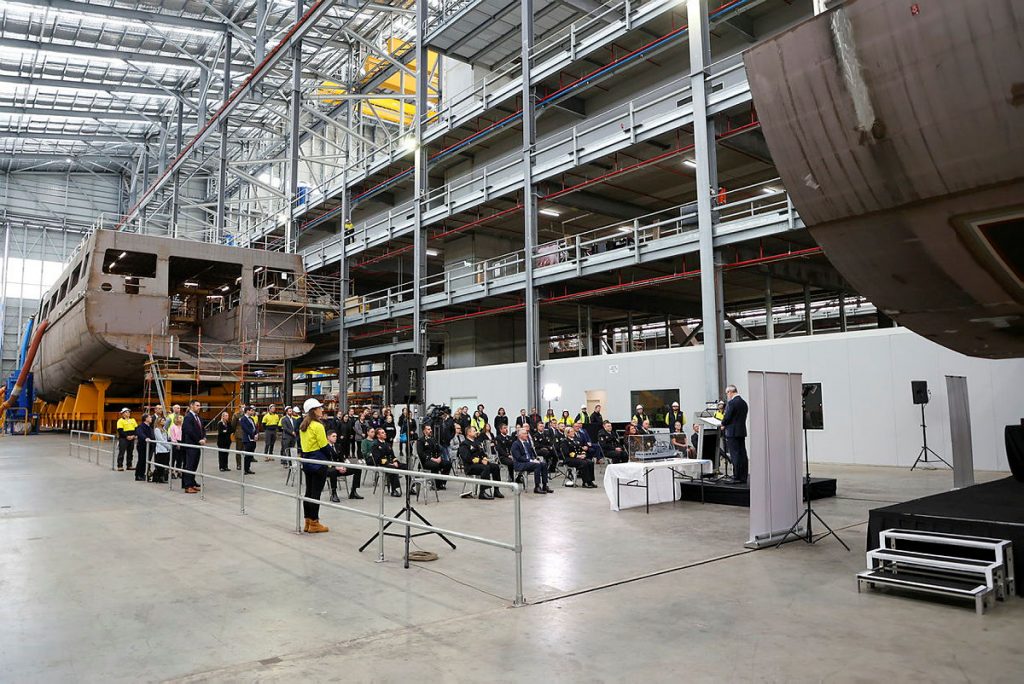
Graeme Dobell’s
brief history of ASPI’s Cost of Defence series over two decades reveals a fascinating tussle between Australia’s military–industrial complex and economic reality. That tussle is arguably more intense than ever, reflected in recent reports by Treasury and the Productivity Commission.
When plans to acquire materiel on a scale unprecedented in peacetime were formulated by the Department of Defence, Australia’s strategic environment was relatively benign and the economy was buoyed by decades of uninterrupted growth. Over the past 18 months, the geostrategic outlook has deteriorated, and so has the fiscal climate.
From Australia’s lacklustre productivity performance, vastly increased government debt from Covid-19, and structural deficits in the federal budget that are likely to persist for decades comes a need to carefully prioritise Defence’s investment in capital equipment. Central to that is whether an enterprise approach to managing acquisitions should be strengthened in existing areas and extended to others.
Treasury’s
2021 Intergenerational Report forecasts defence funding to increase at a relatively modest rate, from 2.1% of GDP now to 2.3% in 2031–32, and thereafter ‘in line with the economy’. That’s based on an optimistic rate of productivity growth. Before the report’s release, Treasury Secretary Steven Kennedy
observed that ‘when deficits are being used to support economic growth, the quality of decision making is crucial’. One political commentator
remarked that ‘national security hawks have their best hopes punctured by the [intergenerational report].’
None of that necessarily precludes more funding for Defence should the need arise. But several factors perhaps not captured fully in current financial planning could also place significant pressure on the department’s budget and demand a more exacting approach to investment decisions:
- a strategic requirement to stockpile more imported capital equipment, materials and components and/or to bolster historically low levels of Australian industry participation in current equipment projects
- the risk of unexpected cost overruns on projects undertaken domestically for the first time in decades and/or on new designs
- an upsurge in defence industry activity when suitably skilled labour and other inputs are in short supply
- the prices of new weaponry rising faster than economy-wide inflation
- those weapons potentially attracting substantial price premiums for preferring domestic over foreign supply
- the possibility that accelerating the pace of delivery of equipment manufactured domestically will require more of the same equipment to be purchased to guarantee continuity of work for industry.
Superimposed on all is the problem of investment
‘lock-in’. Hardly a day passes without concerns that the Australian Defence Force’s capital equipment structure lacks the flexibility to respond to a more threatening strategic environment and the rapid development of technologies. Naval vessel and military vehicle projects appear to absorb vast amounts of money that could be directed to other areas of defence.
Lock-in can be attributed in part to an information void for data on the economic impact of those highly protected projects, which has been filled with some
unusual claims of ‘jobs and growth’.
As Paul Dibb and Richard Brabin-Smith have
noted, the existing requirement for dealing with the plethora of challenges now facing Defence ‘isn’t for a detailed plan but rather a set of principles that would be applied to the development of the force structure and defence policy for industry’.
Most of those principles can be found in the Productivity Commission’s 13 August
final report on Australia’s vulnerable supply chains, which outlines the objectives of an appropriate policy for industrial self-reliance and an associated framework for enterprise-level and project-level cost–benefit analysis.
A central theme of the report directly relevant to Defence’s dual problems of a constrained budget and investment lock-in was
reiterated by the commission’s chair, Michael Brennan:
When I look at the current debate—with contributions from economists, policy commentators, business and community leaders—I see two dark clouds on the horizon.
The first is the renewed promotion of ideas of national self-sufficiency and sovereign capability coming out of the pandemic. This is not a new phenomenon, but it has found new voice.
The second is an overly sanguine view about ever-expanding debt and deficit as an ongoing approach to fiscal policy—effectively that government can and should go yet further with fiscal expansion in more normal economic times at no effective cost.
If you are in either of those camps, my advice is: be careful what you wish for.
On self-sufficiency … Australia’s experience with the protection of domestic manufacturing—roughly an 80-year experiment—was not an overly happy one.
Expanding on that theme, my next post will examine Defence’s approach to ensuring the availability of critically important industrial capabilities.
 Print This Post
Print This Post